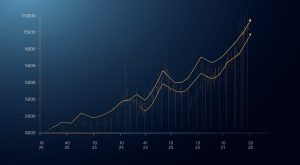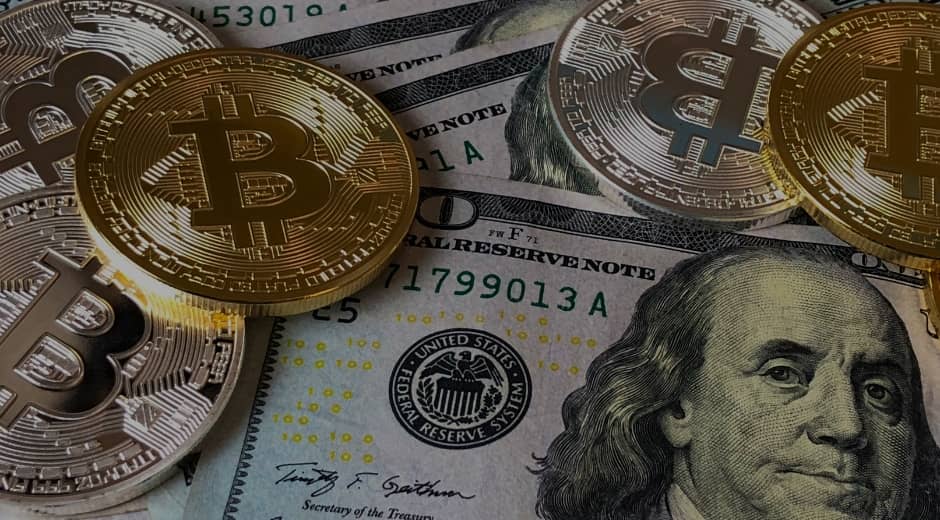Tokenization in 2025: Redefining Ownership in the Digital Economy
As blockchain technology continues to evolve, one of its most revolutionary applications is gaining unstoppable momentum—Tokenization. This process, which converts real-world assets into digital tokens, is transforming how people perceive ownership, trade, and value creation in the global economy.
In 2025, Tokenization has become the new frontier of finance, connecting traditional institutions with the limitless potential of decentralized technology.
What Is Tokenization and Why It Matters
At its core, Tokenization involves representing physical or intangible assets—like real estate, art, commodities, or even intellectual property—as digital tokens on a blockchain. These tokens can then be traded, divided, or transferred seamlessly, with transparent ownership records and reduced intermediaries.
Imagine owning a fraction of a luxury apartment in London, a Picasso painting, or a gold reserve in Zurich—all managed and verified digitally in real time. That’s the promise of Tokenization, and it’s becoming a reality faster than expected.
According to Forbes, the global market for tokenized assets is projected to surpass $16 trillion by 2030, fueled by institutional adoption and regulatory clarity.
From Crypto to Real-World Assets
While the crypto boom introduced digital currencies, Tokenization extends the concept to tangible assets. It merges the innovation of blockchain with the security of real-world collateral.
Today, platforms are offering tokenized shares of real estate projects, precious metals, fine art, and even music royalties. Investors can buy or sell fractions of these assets, democratizing access to markets that were once reserved for the wealthy or institutional players.
This shift toward fractional ownership is one of the most significant wealth redistribution mechanisms of the decade.
Tokenization and Liquidity Transformation
One of Tokenization’s biggest strengths is liquidity. Traditionally, assets like property or fine art are illiquid—difficult to sell quickly without a significant loss in value. Tokenization changes that by turning these assets into divisible digital units that can be traded on global marketplaces.
Liquidity not only makes investing more dynamic but also reduces barriers to entry. Small investors can now access high-value assets through fractional tokens, while institutions can manage diversified portfolios with greater flexibility.
At FinanceWorldHub, we explore the most impactful Tokenization projects and platforms redefining asset management. Visit our FinanceWorldHub insights section for continuous updates and expert reviews.
Security, Trust, and Transparency
Skepticism around digital assets often revolves around trust. Tokenization directly addresses that issue through transparency. Every transaction is recorded on a blockchain ledger, creating an immutable audit trail.
This ensures authenticity and eliminates disputes about ownership or value. Smart contracts automatically enforce agreements, reducing legal and administrative friction.
In 2025, even governments and financial regulators are exploring Tokenization as a tool to modernize financial systems and improve compliance tracking.
How Tokenization Impacts Traditional Finance
Tokenization is not replacing traditional finance—it’s enhancing it. Banks, asset managers, and investment firms are integrating blockchain-based systems to tokenize their holdings. This enables faster settlements, lower costs, and broader market access.
For example, tokenized government bonds are now being tested in major economies, offering faster transactions and lower administrative fees compared to traditional bond trading. The synergy between fintech innovation and regulated frameworks is defining the next era of capital markets.
The Rise of Tokenized Funds
A growing number of investment funds are now tokenizing their portfolios. This innovation allows investors to buy into funds without traditional brokerage limitations. It also provides transparency over what the fund holds and how assets perform in real time.
Tokenized ETFs and private equity vehicles are bridging the gap between blockchain enthusiasts and institutional investors. As adoption grows, these products could become standard components of diversified portfolios.
You can explore comparative performance data Fixolix to see how tokenized funds are performing relative to traditional ETFs and mutual funds.
Legal and Regulatory Evolution
In 2025, regulators have begun defining clearer frameworks for Tokenization, particularly in the US, Europe, and Asia. Legal recognition of digital tokens as valid representations of ownership has accelerated institutional adoption.
However, compliance remains a key challenge. Ensuring investor protection, anti-fraud measures, and accurate valuation mechanisms will determine how quickly Tokenization scales globally.
Forward-thinking jurisdictions like Switzerland and Singapore are leading the way, offering flexible yet secure environments for innovation.
Tokenization in Real Estate and Beyond
Real estate remains the most active sector for Tokenization. Investors can now own shares of commercial buildings, residential developments, or infrastructure projects without complex paperwork.
The same principle applies to other industries:
-
Art: Galleries tokenize paintings to allow fractional ownership.
-
Music: Artists tokenize royalties to fund projects directly from fans.
-
Commodities: Gold and oil-backed tokens simplify trade and settlement.
This multi-sector expansion demonstrates that Tokenization isn’t a trend—it’s a structural evolution in how the world exchanges value.
Challenges That Remain
Despite rapid progress, challenges persist. Market liquidity for newer tokenized assets remains inconsistent, and not all investors understand the technology. Custody solutions, security standards, and interoperability between blockchains still require improvement.
But as institutions and governments collaborate with technology firms, these hurdles are being overcome step by step. The infrastructure of trust is expanding globally.
Looking Ahead: The Future of Ownership
By 2030, Tokenization could underpin nearly every major asset class. Its potential lies in creating a universal financial language—one where ownership, trade, and compliance coexist on a transparent, global ledger.
Whether you’re an institutional investor or an individual exploring fractional wealth, Tokenization represents empowerment, accessibility, and efficiency. It’s the digital key unlocking a new definition of ownership for the modern world.
Conclusion: The Great Shift Has Begun
The financial world is entering a new chapter where Tokenization bridges traditional assets with blockchain technology. It’s not just about digitization—it’s about transformation.
By redefining how we own and exchange value, Tokenization stands as the foundation for the next great financial revolution. The era of digital ownership has arrived, and it’s here to stay.
Education Made Simple

Blue Chip Stocks in 2025: Resilience, Reliability, and Real Growth
Blue Chip Stocks in 2025 remain pillars of market stability and growth, offering investors security, dividends, and consistent long-term value.

Index Funds in 2025: The Timeless Strategy Thriving in a New Financial Era
Index Funds in 2025 remain a cornerstone of smart investing, balancing simplicity, diversification, and steady returns in a volatile market environment.

Natural Gas in 2025: Balancing Energy Demand and Sustainability
Natural Gas in 2025 plays a pivotal role in global energy transition, balancing affordability, sustainability, and reliability amid evolving markets.












